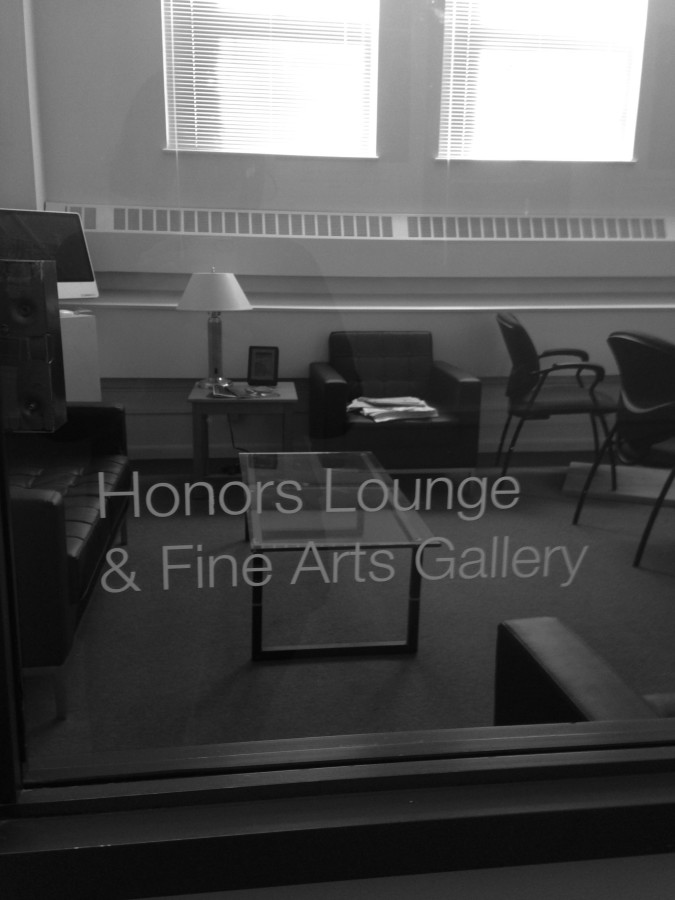Fine Arts now includes music lessons for credit
November 12, 2014
Saint Anselm College has always been defined in part by its tradition of liberal arts education. The college requires students to fill their core and major requirements along with courses in Philosophy and Theology.
These requirements are geared toward enriching student’s lives and preparing them for their professional careers.
However, we sometimes forget that Fine Arts prove to be an important aspect of our education.
Although not part of the Core Curriculum, the Fine Arts courses allow students to make connections with other areas of their education, explore their artistic abilities, and create new works of art.
The Fine Arts Department, chaired by Professor Katherine Hoffman, motivates students to enhance these abilities within their liberal arts education.
The Department offers classes in three different areas: Art History, Studio Art, and Music. Along with their courses, the Department hosts an array of artistic performances, workshops, service-learning projects, and field trips.
One of the recent field trips students took was to the Museum of Fine Arts in Boston for Professor Hoffman’s 19th Century Art Course.
Professor Hoffman wants to show the importance of Fine Arts courses on college campuses. She says, “Instead of S.T.E.M. (Science, Technology, Engineering, Math), being prominent on college campuses, we should instead have S.T.E.A.M. (“A” for Arts). We should have more Fine Arts in both the curriculum and campus. It would really enhance the campus at large.”
The department has recently been expanding their curriculum beyond art-related courses. This past fall, the college started offering music lessons for academic credit; a program that gives voice, piano, and guitar lessons.
The Dana Center has accommodated these new changes by building individual practice rooms that allow students to develop their musical skills.
However, due to these exciting changes, we sometimes don’t acknowledge the other opportunities that the Fine Arts Department has to offer.
Throughout the campus, the Fine Arts Department has four art exhibitions. These include the galleries at Comiskey (located across the street) and the Dana Center (exhibit of Alumni work). One can see more student work along the corridors by the Honors Lounge as well (located beneath the Chapel Arts Center).
The college’s Exhibition Coordinator Tim Schloemer assists in putting some of the exhibitions on campus in place. He recently started with the college this past fall and has been an Exhibit Specialist for 25 years. He assists with setting the exhibitions in motion and works on getting art supplies for the art building Comiskey.
He encourages more students to see the other galleries around campus. Starting next spring, Schloemer hopes to bring a new exhibit to the Living Learning Commons (formerly New Hall) which would showcase more student art.
Schloemer emphasizes the importance of showcasing students’ work. “We try to give a voice to the artist at St. A’s. Having a space to exhibit inspires students to create.”
The most recent exhibition Schloemer has been working on is the “Majolica: Ceramics by Megan Bogonovich” exhibit featured by the entrance of Geisel Library. Schloemmer thinks the collaboration with the library is excellent because it “connects books and art together and makes students feel welcome to browse”. The exhibit will be on display starting from November 7th through December 18th.
The exhibit, first suggested last spring by painting and drawing professor Kimberly Kersy Asbery, is the first collaboration between the Fine Arts Department and Geisel Library. The exhibition features Majolica, an earthenware that has a white, tin-opacified, viscous glaze.
The Majolica style began in the Middle East and was brought over to Spain after the conquest of Northern Africa.The Italians imported the earthenware from the Spanish port of Majorca, and named it majolica ware.
Decorating this kind of pottery is usually restricted to five colors: cobalt blue, antimony yellow, iron red, copper green, and manganese purple, and is often applied with a brush using a calligraphic style. The most common shape made is the display dish. The dish is usually decorated in the istoriato style (an Italian style that uses the body of the dish as a support for a pictoral effect).
The creator of the exhibit is six-year ceramics professor Megan Bogonovich. Having the exhibit in Geisel is perfect, given how library books often inspire her. She writes in her bio, featured at the exhibit, that “unlike a Google search, flipping pages can take me to visual places that would not normally be in my search criteria”.
She had an immediate attraction to clay in her early years as an artist and the majolica glaze “allowed [her] to doll up [her] rudimentary clay forms with the familiar two-dimensional tool box of a painter”. She compares decorating the glazed pottery to that of watercolor.
Although she has progressed as an artist, she is still drawn to the majolica for its bright and loud colors and patterns. Aside from the Geisel Exhibit, her current exhibits include The McCoy Gallery at Merrimack College and the Mobilia Gallery in Boston.
Bognovich currently has a studio in Concord, New Hampshire and one can find out more about her work at her website www. meganbogonovich.com.
This exhibition and the other galleries on campus truly show how prominent the Fine Arts are on campus. The Fine Arts exhibitions and courses give multiple opportunities for both majors and non-majors to take part in.
Students should take the opportunity while they can to try something new, explore their artistic talents, or even support their peers by seeing the exhibits on campus.
The Fine Arts should not be ignored, and St. A’s has succeeded in its efforts to make the Fine Arts more noticed on campus so that all students and faculty can enjoy the work that the department has worked so hard to achieve.



